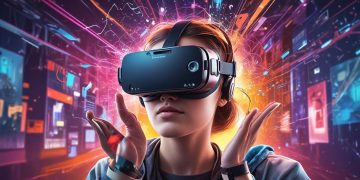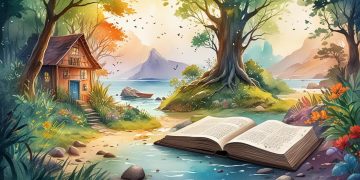
Exploring Different Forms of Artistic Expression: Painting, Music, and Dance
This piece explores the diverse dimensions of artistic expression through painting, music, and dance. Each medium uniquely conveys emotions and cultural narratives, fostering deep connections among individuals and communities. It highlights how these art forms intertwine, enriching our understanding of human experience and creativity in a rapidly evolving world.

The Influence of Digital Art on the New Generation of Artists
The rise of digital art is transforming how the new generation of artists create and connect. Accessible technology fosters experimentation and collaboration, enabling diverse voices to thrive. While challenges like market saturation and copyright issues exist, the evolving digital landscape empowers artists to redefine contemporary creativity and engage globally.

Art as a Tool for Activism: Movements and Messages
Art serves as a powerful tool for activism, inspiring movements and fostering dialogue on critical social issues. Through various formats like street art, performance, and digital media, artists challenge societal norms, promote justice, and unite communities, proving creativity's essential role in driving meaningful social change.

The Importance of Art in Early Childhood Education: Stimulating Creativity from an Early Age
Art plays a crucial role in early childhood education by enhancing creativity, cognitive skills, and emotional intelligence. Engaging in artistic activities fosters problem-solving abilities, social skills, and cultural awareness, while also boosting academic performance. Prioritizing art education prepares young learners for a dynamic future filled with innovative thinking.

The Intersection of Technology and Artistic Expression: The Role of Virtual Reality
The article explores how Virtual Reality is revolutionizing artistic expression by creating immersive experiences that engage audiences like never before. It highlights innovations in storytelling, interactive installations, and global access to art, while addressing challenges like sustainability and technology ethics, ultimately reshaping the creative landscape.

Participation in Writing Workshops: Benefits and Tips for Beginners
Writing workshops provide aspiring writers an enriching environment to enhance their skills through expert feedback, networking, and structured practice. For beginners, these supportive spaces foster creativity, build confidence, and emphasize the importance of constructive criticism—paving the way for personal growth and storytelling success.

Chronicle Writing: Capturing Everyday Life with a Creative Eye
Chronicle writing beautifully captures everyday moments through personal perspectives and emotional narratives. By focusing on the mundane, writers transform ordinary experiences into relatable stories that resonate with readers. This art form encourages reflection and connection, celebrating the significance of daily life with a creative eye.

Artistic Journaling: Blending Writing and Visual Creativity
Artistic journaling blends writing and visual creativity, fostering self-expression and emotional processing. This practice enhances personal growth and boosts creativity through techniques like mixed media and thematic exploration. It serves as a powerful tool for introspection, connecting individuals to their thoughts and feelings in profound ways.

Poetics of Prose: Integrating Poetic Elements in Fiction Writing
Exploring the integration of poetic elements in fiction writing elevates prose by enhancing imagery, sound, and emotional depth. This blend creates immersive narratives that resonate with readers, fostering a profound connection to the characters and themes. Mastering these techniques enriches storytelling and transforms ordinary tales into captivating literary experiences.

Interactive Fiction Writing: Creating Narratives that Allow the Reader to Choose Their Own Path
Interactive fiction writing revolutionizes storytelling by empowering readers to make choices that shape narratives. This immersive genre fosters engagement, offering unique outcomes and emotional connections. Techniques such as dynamic worldbuilding and dialogue trees enhance reader investment, making every decision impactful while transforming traditional narratives into collaborative experiences.